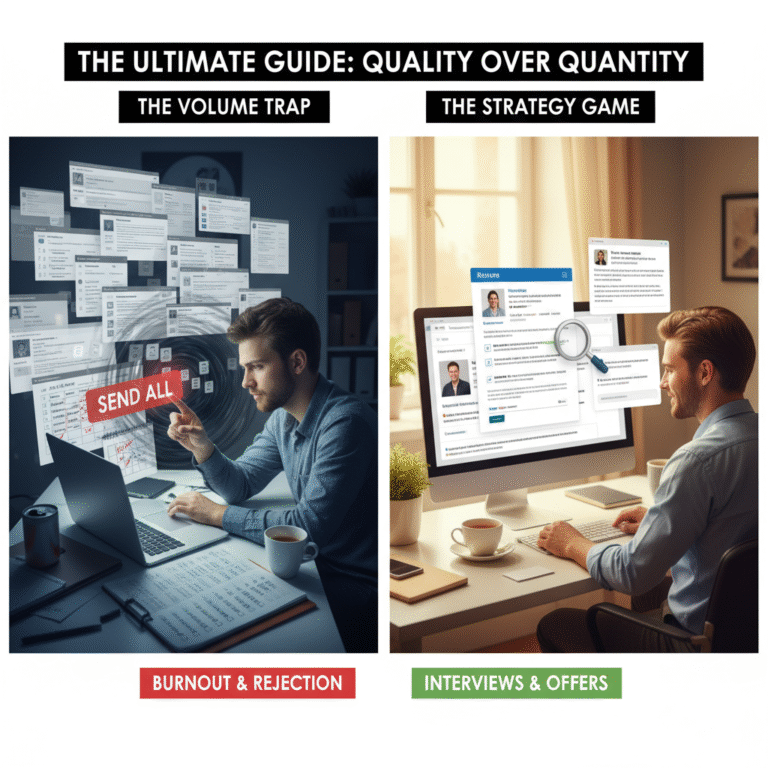The Complete Guide to Your First Data Analyst Job: What to Expect and How to Prepare
We live in a world drowning in data. Every click, every swipe, every purchase, and every stream generates a digital footprint. Companies have more information than ever, but this data is useless—a noisy, chaotic mess—without someone to make sense of it. That “someone” is a Data Analyst. This role has become one of the most in-demand, highest-paying, and most secure entry points into the tech industry.
But for a beginner, the path seems incredibly intimidating. You hear terms like SQL, Python, R, Tableau, Power BI, and “machine learning,” and it feels like you need three different computer science degrees just to apply. This perception is wrong.
You don’t need to be a math genius or a coding prodigy to become a data analyst. You need to be a curious problem-solver. This guide is your complete roadmap. We will demystify the role, provide a step-by-step plan to gain the *exact* skills you need (and skip the ones you don’t), and show you how to build a project portfolio that gets you hired for your first data analyst job, even with no prior experience.
What Does a Data Analyst *Actually* Do?
Let’s clear this up first. A Data Analyst is not a Data Scientist (who builds complex predictive models). A Data Analyst is a “storyteller” who uses data to answer important business questions.
Your job is to be a translator. You take a messy pile of raw data (like sales figures, website traffic, or customer feedback), and you:
- Clean it: Organize it, remove errors, and make it usable (this is 80% of the job!).
- Analyze it: Find patterns, trends, and insights. Ask questions like, “Why did sales drop in the Northeast last quarter?” or “Which marketing channel brings in our most valuable customers?”
- Visualize it: Create charts, graphs, and dashboards that make the data *easy to understand* for non-technical people (like the CEO or the marketing team).
- Present it: Communicate your findings and recommend a course of action. You don’t just present a graph; you present an answer.
You are a detective and a storyteller. The “data” is just your evidence.
The 5-Step Roadmap to Get Your First Data Analyst Job
This is the proven path. Don’t get distracted by “10-week bootcamps” that promise the world. Focus on these five fundamentals, and you will be hireable.
Step 1: Master the “Core Trinity” of Skills
You don’t need to learn ten tools. You need to be truly proficient at three. This is the data analyst “core trinity.”
1. SQL (The Language of Data)
If data is treasure locked in a vault, SQL (Structured Query Language) is the key. SQL is the universal language used to “talk” to databases. You use it to pull, filter, join, and organize data. You cannot be a data analyst without it. This is non-negotiable. Spend 50% of your learning time here. You need to be comfortable with `SELECT`, `FROM`, `WHERE`, `GROUP BY`, and `JOIN` commands.
2. A Visualization Tool (Tableau or Power BI)
A spreadsheet with 10 million rows is meaningless to a CEO. A bar chart that shows “Sales are up 30%” is an insight. Your job is to visualize. The two industry-standard tools are Tableau and Microsoft Power BI. Pick *one* and get good at it. Power BI is more common in large, established corporations (it works well with the Microsoft ecosystem), while Tableau is often favored by startups and tech companies for its flexibility. Download the free public version of either and start practicing.
3. An Advanced Spreadsheet Tool (Excel or Google Sheets)
Never underestimate the power of spreadsheets. You will use Excel or Google Sheets every single day. You must go beyond basic sums. You need to be a master of Pivot Tables, VLOOKUP/XLOOKUP, and basic data-cleaning formulas. This is your “workbench” for quick-and-dirty analysis before moving to bigger tools.
What about Python or R? These are programming languages used for more advanced statistical analysis (closer to Data Science). While helpful, you *do not* need them for 90% of entry-level analyst jobs. Focus on the core trinity first.
Step 2: Build Your “Proof of Work” Portfolio (The Most Critical Step)
This is the secret to getting hired with no experience. A portfolio *proves* you can do the job. A certificate just proves you can pass a test. You must build 2-3 high-quality portfolio projects.
Why You Can’t Skip This
In an interview, the manager won’t ask you to define SQL. They will say, “Tell me about a time you used data to solve a problem.” Your portfolio project *is* your answer. It’s your “work experience.”
3 Project Ideas to Build Today
Don’t use the generic “Titanic” or “Iris” datasets. They are overdone. Find a unique dataset from a public source like Kaggle, Data.gov, or even a sports statistics site.
- E-commerce Sales Analysis: Find a dataset of online store transactions. Analyze it to answer: “Who are the top 10% of customers by lifetime value?” “What is the most commonly purchased item pairing?” “What is the average time between purchases?” Build a Power BI dashboard to present your findings.
- Public Transit or Ride-Sharing Analysis: Find a dataset of city bike-share or subway usage. Analyze it to answer: “What are the 10 busiest stations?” “How does ridership change on weekends vs. weekdays?” “What routes are most/least efficient?”
- Your Personal “Quantified Self” Project: Track your own data for 30 days (e.g., your sleep, your spending, your screen time). Put it in Google Sheets, analyze the patterns, and build a simple dashboard. This shows passion and creativity.
For each project, create a simple one-page write-up or a post on LinkedIn: 1) The Problem, 2) My Process, 3) The Result (your dashboard). Link this on your resume.
Step 3: Get Your Resume Past the ATS
Your resume’s first audience is a robot (the Applicant Tracking System). You must “seed” it with the right keywords.
- Your Title: “Aspiring Data Analyst” or “Data & Business Analyst.”
Example:
Sales Data Analyst (Portfolio Project) | Kaggle Datasets | 2024
• Cleaned and analyzed a 100,000-row e-commerce dataset using SQL to identify customer segments.
• Built a dynamic dashboard in Tableau to visualize sales trends, leading to the insight that 60% of revenue comes from 15% of products.
• Presented findings in a mock executive summary, recommending a “product bundling” strategy.
Step 4: Where to Find the *Right* Entry-Level Roles
The job title “Data Analyst” is often overused. You must search for “Business Analyst” (BA) as well.
- A Data Analyst role is often more technical (SQL/Dashboards).
- A Business Analyst role is often more focused on business process and communication (Excel/PowerPoint) but still requires data skills.
Apply for *both*. Also, look for titles like “Marketing Analyst,” “Sales Analyst,” “Operations Analyst,” or “Business Intelligence Analyst.” These are all data analyst jobs, just hidden in a specific department. These are often less competitive and a perfect way to get your first data analyst job.
Step 5: Master the Data Analyst Interview
The analyst interview has two parts. Be ready for both.
Part 1: The Behavioral Question
This is where you discuss your portfolio.
Question: “Tell me about a project you worked on.”
Your Answer: Use the STAR method (Situation, Task, Action, Result) and your portfolio project. “In my e-commerce project (Situation), I wanted to find out why customer churn was high (Task). I used SQL to pull all transaction data and join it with a customer support log (Action). I discovered that 70% of churned customers had a ‘late shipping’ complaint, which I visualized in a Tableau dashboard. This showed the business needed to fix its shipping process, not its marketing (Result).”
Part 2: The Technical/Case Study
They will give you a small technical challenge. This is designed to be simple. They are not trying to trick you. They want to see:
- Can you write a basic SQL query? (They’ll give you 2-3 tables and ask a question like, “Find all customers from New York who spent over $100.”)
- How do you *think*? (They’ll give you a vague business problem like, “Our app engagement is down. How would you investigate?” They want you to ask clarifying questions *before* you start analyzing, like “Down compared to when? Which users? On what device?”)
Stay calm. Talk through your thought process out loud. They are hiring you for your mind, not just your code.
Conclusion: You Are Closer Than You Think
You do not need to go back to school for four years. You can get the core, job-ready skills for your first data analyst job in 6-9 months of dedicated, project-based self-study.
The world needs people who can find the signal in the noise. By mastering the core trinity (SQL, Tableau/Power BI, Excel), building a portfolio that proves your skill, and confidently telling the “story” of your analysis, you are not just a beginner. You are a problem-solver, and you are exactly who companies are looking to hire.






